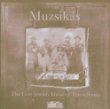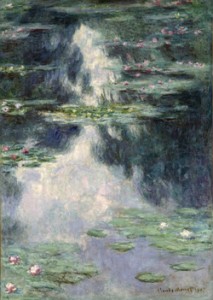Issue Archive
Brief Reviews: The Costs, and Agony, of Freedom
FILMS
 Free Men
Free Men
This superbly acted World War II feature is based on a slice of history that should be better known to Jews and Arabs alike: The head of the Grand Mosque in Paris not only sheltered Algerian members of the French Resistance but also protected Jews with false papers stating that they were Muslims. Ismaël Ferroukhi’s film is seen through the eyes of a young Algerian immigrant who is transformed from black marketeer to Resistance fighter (www.filmmovement.com). —Judy Gelman Myers
400 Miles to Freedom
Avishai Mekonen walked 400 miles from Ethiopia to Sudan, en route to Jerusalem. In the refugee camp, slave traders kidnapped him and fed him a drug that made him forget his name. He was rescued two weeks later, but the experience of losing his identity took on a sociopolitical cast when he and his community, airlifted to Israel, were denied status as Jews, despite their long practice of Judaism. In this film, Mekonen comes to terms with his history (https://fourhundredmilestofreedom.com). —J.G.M.
Inside Hana’s Suitcase
 This powerful docudrama by Larry Weinstein artistically reenacts how Fumiko Ishioka, Tokyo Holocaust Museum director, set out to solve the mystery of Hana Brady after acquiring her suitcase: Who was she and what happened to her? Ishioka shares the quest with her young students—and part of the film’s pleasure is the involvement of Japanese, Czech and Canadian youngsters who empathetically relate Hana’s story as it unfolds. Hana’s brother, George, who lives in Canada, fills in the details of his sister’s life with a full measure of emotion. The film teaches about loss, memory and tolerance. Menemsha Films (www.menemshafilms.com). —Zelda Shluker
This powerful docudrama by Larry Weinstein artistically reenacts how Fumiko Ishioka, Tokyo Holocaust Museum director, set out to solve the mystery of Hana Brady after acquiring her suitcase: Who was she and what happened to her? Ishioka shares the quest with her young students—and part of the film’s pleasure is the involvement of Japanese, Czech and Canadian youngsters who empathetically relate Hana’s story as it unfolds. Hana’s brother, George, who lives in Canada, fills in the details of his sister’s life with a full measure of emotion. The film teaches about loss, memory and tolerance. Menemsha Films (www.menemshafilms.com). —Zelda Shluker
Welcome to Kutsher’s
Although in need of judicious editing, this entertaining documentary traces the socioeconomic history of the Borscht Belt, Kutsher’s role as hotbed of Jewish humor and the Kutsher family’s dedication not only to its hotel guests but to its staff—including the tall, young bellhop Wilt Chamberlain, for whom the Kutshers built a special bed. Great archival footage makes you yearn for more. Directed and produced by Ian Rosenberg and Caroline Laskow in association with OVO (www.ovoland.com). —J.G.M.
A Bottle in the Gaza Sea
This is a sweet, optimistic film about a friendship that develops when a Palestinian boy finds a letter in a bottle that an Israeli girl has thrown into the sea. The story is based on gritty moments in the life of Valerie Zenatti, a French Jew who immigrated to Beersheba. Her firsthand experience transforms the film, directed by Thierry Binisti, from a naive plea for peace into a personal testimony to be taken seriously. Roissy Films (www.roissyfilms.com). —J.G.M.
EXHIBITS
 A Voyage Through Jewish History
A Voyage Through Jewish History
Abraham and Sarah’s tent, the parting waters of the Red Sea and the tumbling walls of Jericho are all in the new permanent exhibition of biblical scenes that occupies the fourth floor of The Jewish Children’s Museum in Brooklyn, New York (www.jcm.museum). Spanning ancient to modern-day Israel, each themed exhibit features impressive art, interactive games and high-tech effects. Children and adults can enjoy a life-size Noah’s Ark, insert prayer notes into a Western Wall replica or play King David’s intriguing laser harp. —Sara Trappler Spielman
California Dreaming: Jewish Life in the Bay Area From the Gold Rush to the Present
Since the 1849 Gold Rush, the San Francisco Bay Area has been a magnet for Jews. From Levi Strauss to Yehudi Menuhin to today’s high-tech innovators, Jews have settled in a place committed to justice, freedom, innovation and spirituality. The exhibit includes Pam Rorke Levy’s interviews with contemporary Jews as well as a copy of a stained-glass window showing Moses descending from Yosemite National Park’s iconic Half Dome. Through October 16 at the Contemporary Jewish Museum in San Francisco (www.thecjm.org). —Renata Polt
Filming the Camps
Filmmakers George Stevens, Samuel Fuller and John Ford sat in a very different sort of director’s chair during World War II, recording live scenes of warfare for the ages. Photos, documents and videos underscore the strategic and historical importance of war photography and filmmaking as well as highlight the somewhat strange marriage of Hollywood and the military: legal memos deliberating how to show haunting footage of Dachau, recorded by Stevens, as evidence at the Nuremberg trials; military papers threatening disciplinary action for insufficient film coverage; a picture of a film crew, pipes hanging out of their mouths, in fatigues. Through October 14 at the Museum of Jewish Heritage–A Living Memorial to the Holocaust in New York (www.mjhnyc.org). —Ray Katz
RECORDINGS
 Maramaros: The Lost Jewish Music of Transylvania
Maramaros: The Lost Jewish Music of Transylvania
The Hungarian folk ensemble Muzsikás, which recently performed at Carnegie Hall, includes typical Jewish melodies from Transylvania in its repertoire. Although all the Jews of that area were killed during World War II, Gypsy musicians who had performed at Jewish weddings remembered and reconstructed the tunes. This marvelous album collects some of these gems, including “Khosed Wedding Dances,” “Dance From Máramaros” and “Jewish Csárdás.” Marta Sebestyén sings a prayer to God that is a Jewish cry from the heart (www.muzsikas.hu). —Curt Leviant
Jewish Soul
Yonatan Miller describes his music as klezmer/cowboy/folk/jazz. He has taken 19th-century German Jewish folk tunes—inspired by a collection annotated by Joachim Stutschkevsky—and freely accented them with an array of at least 19 instruments, from violin and mandolin to pennywhistle and bongo, to invent a recognizably Jewish eclectic sound. This one-man creation, with titles such as “Ragamuffin Rebbe” and “Shekhina in the Shchuna,” represents one man’s heart and soul (www.cdbaby.com). —Z.S.
WEB SIGHTING

Continuing its drive to make Israel’s visual treasures available to all, the ambitious Google Art Project, www.googleartproject.com, which allows viewers to appreciate in detail art from over 150 institutions, now includes the Israel Museum of Jerusalem. Click on Collections, then Israel Museum to “walk” the museum’s halls, or choose Artworks to admire 520 masterworks from Monet’s Pond of Water Lilies to a Neolithic mask from the Judean desert. The site allows users to search by artist or era and includes other Jewish venues such as London and New York’s Jewish museums. One note: To fully explore the site, viewers must use Google Chrome. —Leah F. Finkelshteyn










 Facebook
Facebook Instagram
Instagram Twitter
Twitter
Leave a Reply